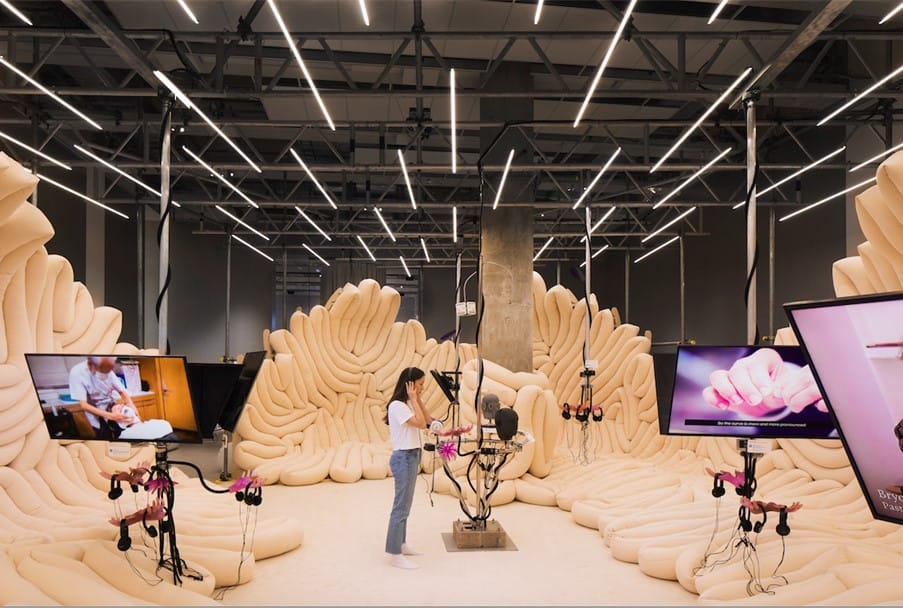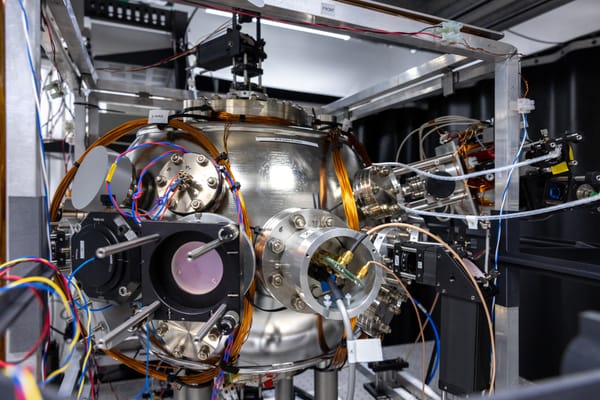World of ASMR review
A new exhibition at the Design Museum explores the weird and the wonderful world of ASMR.

The World of ASMR
★★★★
- What: Exhibition
- Where: The Design Museum
- When: Until October 16th
- Cost: From £7.20 for students
ASMR, or autonomous sensory meridian response, has slowly but surely established itself as an Internet subculture. Videos of people (‘ASMRtists’ as they are now known) whispering or brushing, microphones to elicit a relaxing tingling sensation can be found all over YouTube and TikTok. Is there aesthetic value or a deeper meaning behind these videos, or will it fade away like other internet fads? Regardless, a new exhibition at the Design Museum explores the weird and the wonderful world of ASMR.
The exhibition begins by outlining the different types of ASMR experience. Visual ASMR creations from Oscar Pettersson’s Rotating Rings or Andreas Wannerstedt’s Slice It Up focus on the visual, often hypnotic, ASMR experience as opposed to an audio-based one most found online. Some ASMR experience are “unintentional” such as in the work of Bob Ross. The television painter whose show The Joy of Painting brought a proto-ASMR experience to millions in the early nineties.
Examples of his art line one of the rooms alongside a film of the artist at work. The art he produces is not beautiful. For the most part it is kitsch and tacky, unworthy of much cognitive interrogation. But through the act of painting, the delicate monotony of mixing colours, dabbing his brushes gently in them, and wiping paint onto his canvas, he elicits a meditative sensation. I found myself in a trance, as if the afro headed American’s dulcet tones were lulling me into a higher state of relaxation. There is an anti-intellectualism here; audience members are not required to think but rather just to feel, not in an emotion sense, but in a physical one.

It is this shared feeling, knowing that everyone else feels what you are feeling, that is the foundation of the ASMR to community. The World of ASMR gives serious critical attention to the phenomenon whilst also exploring the culture around it. The emphasis on “digital intimacy” acts as an antidote to digital alienation, doom scrolling, or social media induced anxiety. This is the concept at the heart of Marc Teyssier’s Prototype for Artificial Skin for Mobile Devices. The work consists of a silicone coating, evoking the appearance of venous skin, coating a phone: the phenomenological experience of human skin and human experience in clear dialogue with the phone’s hard plastic exterior, but also the ethereal digital world it enables. It is reminiscent of David Cronenberg whose horror film Videodrome sees a nightmarish fusing of body and technology. Except here the object is mundane, something that could easily find a way into our lived reality.
Needless to say, many of the exhibits are interactive. Julie Rose Bower’s ASMR studio invites participants to create their own ASMR experiences by interacting with a range of objects linked to headphones to induce a tingling feeling. But the highlight of the exhibition are the works that do not just elicit an ASMR experience, but actively question the nature, and interrogate the consequences of said experience.

Tobias Bradford’s that feeling/immeasurable thirst has the aura of a Dada ready-made both in its physical form and its sense of humour. The work consists of a silicon tongue rendered in spine chilling detail with dribbling saliva and taste buds, powered with a small humming motor to simulate movement. It waggles and wriggles; placed at eye level it is almost sexual, inviting its viewer for a French kiss, mocking us in its ability to mimic us. It is comical, but it evokes ideas about Transhumanism and Cyberpunk.
Perhaps this what is so simultaneously disturbing and fascinating about ASMR. Bradford’s work is a reminder that our bodies are nothing more than biological machines. Given the right inputs, certain responses will result. As autonomous and free as I feel, my body is just responding to its world, to the various stimuli it encounters. For some that might be terrifying. For others it is reassuring, something undeniably stable and predictable in a chaotic world.








